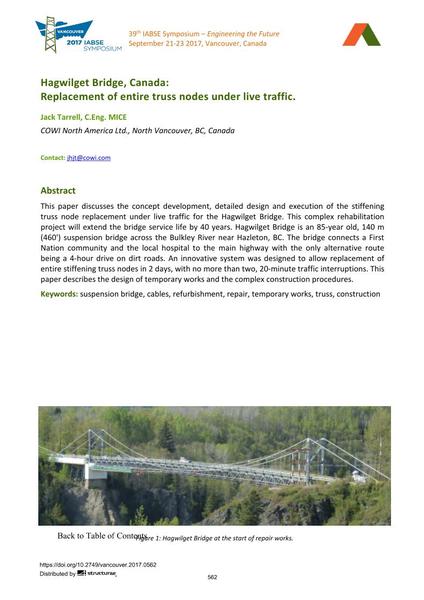Hagwilget Bridge, Canada:

|
|
|||||||||||
Détails bibliographiques
| Auteur(s): |
Jack Tarrell
(COWI North America Ltd., North Vancouver, BC, Canada)
|
||||
|---|---|---|---|---|---|
| Médium: | papier de conférence | ||||
| Langue(s): | anglais | ||||
| Conférence: | IABSE Symposium: Engineering the Future, Vancouver, Canada, 21-23 September 2017 | ||||
| Publié dans: | IABSE Symposium Vancouver 2017 | ||||
|
|||||
| Page(s): | 562-569 | ||||
| Nombre total de pages (du PDF): | 8 | ||||
| Année: | 2017 | ||||
| DOI: | 10.2749/vancouver.2017.0562 | ||||
| Abstrait: |
This paper discusses the concept development, detailed design and execution of the stiffening truss node replacement under live traffic for the Hagwilget Bridge. This complex rehabilitation project will extend the bridge service life by 40 years. Hagwilget Bridge is an 85-year old, 140 m (460') suspension bridge across the Bulkley River near Hazleton, BC. The bridge connects a First Nation community and the local hospital to the main highway with the only alternative route being a 4-hour drive on dirt roads. An innovative system was designed to allow replacement of entire stiffening truss nodes in 2 days, with no more than two, 20-minute traffic interruptions. This paper describes the design of temporary works and the complex construction procedures. |
||||
| Mots-clé: |
pont suspendu câbles structures temporaires
|
||||
